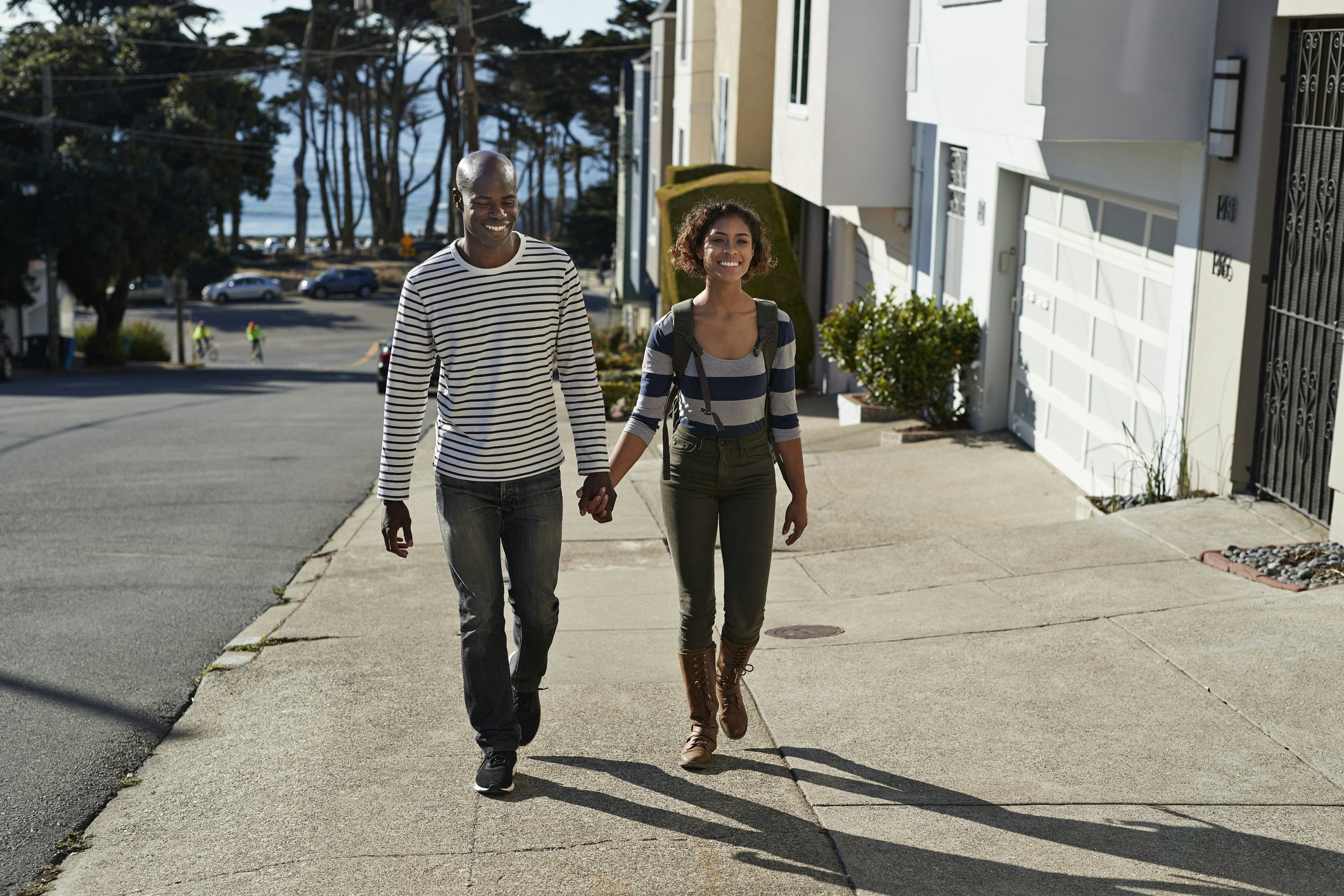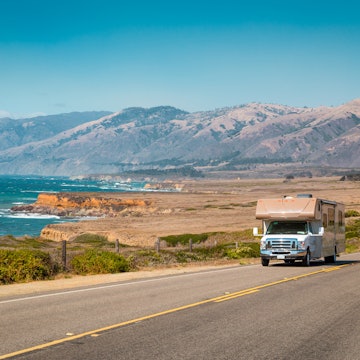

Save some dollars on your visit to San Francisco with these top budget tips © Thomas Barwick / Getty Images
With a much-deserved reputation for being costly, San Francisco and the entire Bay Area regularly top the charts of the USA’s most expensive places to live.
While it’s possible to spend unlimited sums on a visit to SF, there are ways to make your trip more affordable. Book hostels over hotels. Order pizza by the slice. Only drink in dive bars. Find discounted flights. Make the most of California’s support of public transportation, which keeps fares reasonably priced and services convenient (at least by US standards). You get the idea.
What's more, San Francisco is best seen on foot, and the views, neighborhoods and parks – some of the city’s greatest attributes – are all free to see. San Francisco is also known for its great cheap eats, so you can fill up on something tasty without spending a lot. So is San Francisco expensive to visit? Well, no one will ever call SF a budget destination but as you're about to find out, there are ways to tame the expense and still have an extraordinary trip.
Here are our top tips for visiting SF on the cheap.

Daily costs in San Francisco
Hostel room: $35–60
Basic room for two: $120–250+
Self-catering apartment: $150+
Public transport ticket: $2.50–3
Coffee: $3–5
Burrito: $8–12
Dinner for two: $80–200+
Pint at the bar: $6–9
1. Traveling to San Francisco on a budget? First, know when to go
San Francisco's high season stretches across the year. Casual tourists are more prolific in the summer and during holidays, but at other times, hundreds of conventions and meetings big and small keep hotel rooms and restaurant seats filled.
Since January in San Francisco can be just as expensive as August (or any other month), you’ll need to take the time to comparison-shop for flights and accommodations across many dates to find bargains. Look for booking sites and apps that show prices in a calendar format so you can see when rates are reduced.
2. Be flexible with which airport you use
San Francisco’s International Airport (SFO) is served by dozens of domestic and international airlines. As such, competition keeps fares reasonable, but it’s always worth checking the cost of flights to Oakland International Airport (OAK) across the bay. It’s only a little more time-consuming to get into the city from OAK and you may find a cheaper flight there – especially for domestic trips.

3. Ride the BART to and from the airport
The Powell St station on the fast BART train network is close to scores of hotels around Union Square. It's the cheapest way to get to San Francisco because trains are frequent and often quicker than driving on traffic-clogged freeways, so use public transportation where possible. Fares average $10.55 to $15 depending on distance, which is a significant saving over taxis or charges for shared rides.
The same advice applies to Oakland’s airport. BART makes reaching SF easy from OAK, with only one or at most two simple transfers needed.
4. Want cheap travel to San Francisco? Arrive by train or bus
San Francisco has good access to Amtrak trains, although they stop across the Bay near Oakland and are linked to the city by bus. If you’re ready to ride the bus for longer distances, budget Greyhound services come to SF.

5. Forget the hiking trails – walk everywhere else instead
Regularly ranked as one of the most walkable cities in the US, most major sights in San Francisco are reachable on foot, and that's the best way to explore the endlessly engaging neighborhoods. Since 2020 numerous streets across the city have been closed to vehicular traffic one or more days a week and some – such as John F Kennedy Drive in Golden Gate Park – are now closed permanently to vehicles, creating a new public space for walkers, skaters and bikers.
6. Swap cheap things to do in San Francisco for free things to do
If you're planning a San Francisco trip on a budget then first look for free things to do. Swing by little-known museums like the Cable Car Museum, gaze at the sea lions lounging near Pier 39 and cross that famous red whopper, the Golden Gate Bridge.
Other free things to do in San Francisco when you're on a budget include Golden Gate Park, Chinatown and Japantown and topping the Twin Peaks for unbeatable skyline views. There are several free, public beaches to pick from as well. Ocean Beach is the most popular.

7. Ride a bike
San Francisco aims to be the most bike-friendly city in the US, and most residents are in the saddle. Many areas, such as Golden Gate Park (mostly car-free on Sunday), the Embarcadero, Ocean Beach, the Marina, and the park-like Presidio are ideal for cycling. San Francisco has an extensive 448-mile bike network, and most sights are reachable on two wheels. A map of the bike network is available via the SFMTA, and the non-profit San Francisco Bicycle Coalition also offers maps and information for cyclists.
Economical bike-sharing is available citywide through Bay Wheels. Both traditional bikes and e-bikes can be hired from stations throughout San Francisco and are available for single trips, day use, or with monthly access passes. Bay Wheels stations are located downtown and at major intersections – but bikes come without helmets, so bring your own.

8. Take Muni
Muni operates bus, streetcar and cable car lines in San Francisco, and buses and streetcars are referred to interchangeably here as Muni. Some areas are better connected than others, but Muni spares you the costly hassle of driving and parking – and it's often faster than taking a car.
Muni streetcars run in a subway under Market Street, where they are called Muni Metro. Lines J, K, L, M, N and T are excellent means of reaching far-flung parts of the city. There is also the delightful historic streetcar line F, which runs above ground on Market Street and goes to Fisherman’s Wharf along the waterfront. For route planning and schedules, consult Transit 511. For real-time departures, see NextMuni, which syncs with GPS on buses and streetcars to provide best estimates on arrival times. Essential and free Muni street and transit maps are available online.
9. Use the MuniMobile app for single journeys
You can use the MuniMobile app to pay transportation fares and you'll get discounted rates when compared to cash purchases. On buses and streetcars, tickets bought from drivers (exact change required) or at underground Muni stations (where machines give change) cost $3. With a reloadable Clipper card (see below) or by using the MuniMobile app, the fare falls to $2.50. A single fare is good for two hours of rides. Fares are 50% less for people age 65 and older, and those ages 18 or younger ride for free.
At the start of your Muni journey, free transfer tickets are available for additional Muni trips (not including cable cars or BART) within 90 minutes. After 8:30 pm, buses issue a Late Night Transfer good for travel until 5:30 am the following morning.

10. Staying longer? Get a Muni pass through the app
The Muni Visitor Passport is aimed at tourists and offers some savings (1/3/7 days $24/36/47; with the MuniMobile app, $13/31/41). It allows unlimited travel on the Muni system, including cable cars, and is sold at ticket kiosks and other locations.
The Muni’s great bargain is the regular day pass aimed at residents. It only costs $5 whether bought with the MuniMobile app or at a farebox or kiosk. It allows unlimited rides on the entire system except for the cable cars.
11. Get a Clipper card for travel across the Bay Area
Clipper is a reloadable fare system with cards that work on Muni, BART and other public transportation systems across the Bay Area. It automatically deducts fares and applies transfers (eg only one Muni fare is deducted per 90-minute period). You can put a digital Clipper Card on your phone for free, or purchase a physical card for $3.
Downtown Muni/BART stations have machines that sell Clipper cards and fare credit. Clipper Cards, whether in physical or digital form, can be linked to a credit card so that they automatically refill with value.
Tip: Buy a Clipper Card with your phone before you arrive in the Bay Area. The line to buy BART tickets at SFO is notoriously long, as jet-lagged travelers fumble with the unfamiliar ticket machines and obtuse interface. With a Clipper Card, you can bypass the huddled ticketless masses and head right to the trains.

12. Taxis and shared rides aren't worth the cost or traffic
Taxi fares start at a $5.50 pick-up fee, and charge $4.15 for the first one-fifth of a mile, and run at $3.25 per mile. Add 15% to the fare as a tip ($1 minimum), and the cost adds up fast. For the quickest service in San Francisco, download the Flywheel app, which dispatches the nearest taxi.
Lyft and Uber are based in San Francisco and are both ubiquitous and expensive. With surge pricing, traditional taxis are often less costly, though both taxis and shared ride vehicles get stuck in the same bad Bay Area traffic.

13. Food from casual vendors is delicious and affordable
Yes, you can spend stratospheric amounts of money on some of the finest meals in the country here, but you can also enjoy the same passion for high-quality fare in more pedestrian form – literally. The humble Mission-style burrito is ubiquitous in SF and is usually delicious. All manner of great eats are sold from storefront shops and cafes across the city. As you walk the city’s streets, watch for lines of people outside bakeries, taquerias, dim sum shops, delis and other casual spots.
Some of the city's best chefs and purveyors have outlets in addition to their pricey restaurants where you can enjoy their food without the dine-in prices. The iconic Ferry Building has excellent eating and drinking options with to-go items at affordable prices – just find an outdoor bench with views of the bay and enjoy!
14. Do the math before you buy a tourist pass
Two companies carry discount passes aimed at tourists in San Francisco. Whether they offer any real value depends on what you want to do with your time in the city – if either set of attractions is on your list of things to do, it’s worth doing the math to see if the passes will save you money.
CityPass (adult/child $87/67) covers entry to four attractions, including the California Academy of Sciences, Blue & Gold Fleet Bay Cruise, the Aquarium of the Bay, the San Francisco Zoo and the Exploratorium. It also offers a C3 pass, giving you one-time entry to three attractions.
Go City (adult/child, one day from $84/66) comes in a somewhat bewildering array of options for varying lengths of time. It provides access to many major attractions, including the California Academy of Sciences, the de Young Museum, the Aquarium of the Bay, SFMOMA, USS Pampanito, the Beat Museum, Exploratorium, and many more.
















